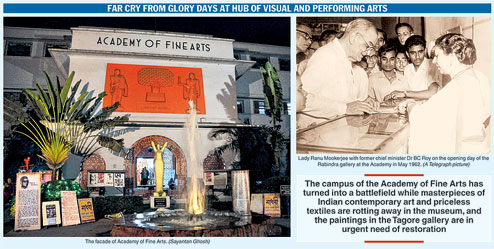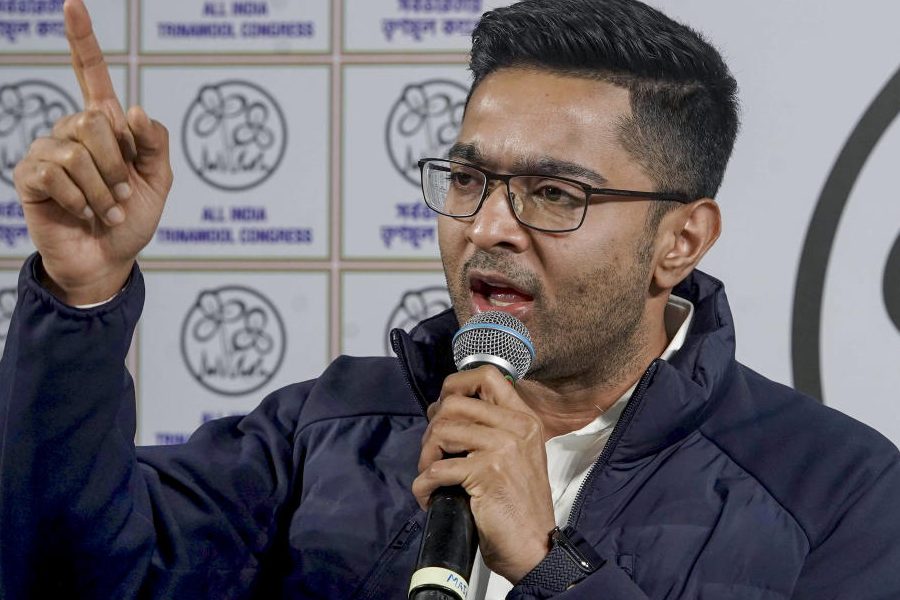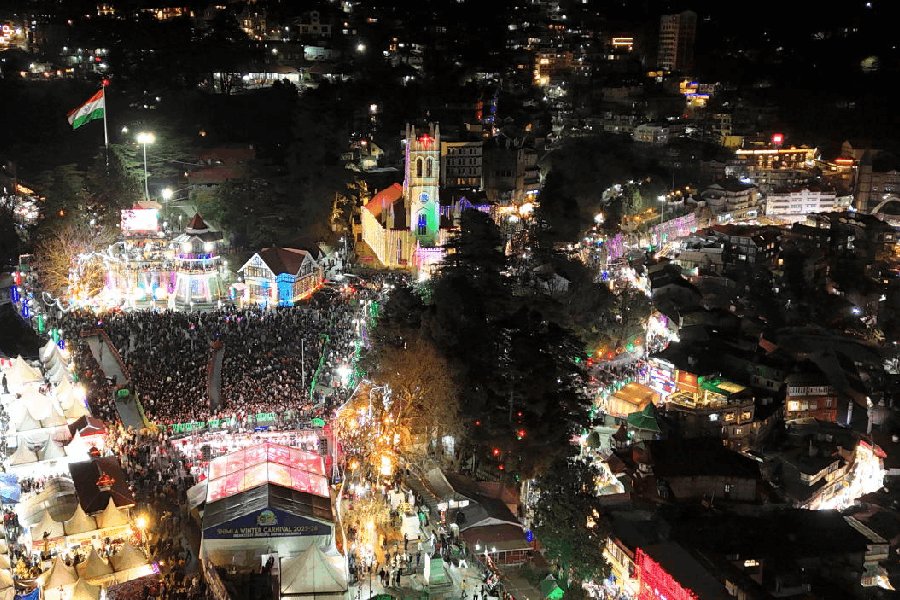 |
The campus of the Academy of Fine Arts, Calcutta’s most popular culture centre famous both for visual as well as performing arts, has turned into a battlefield where rallies, dharna and vandalism have become routine.
At the same time, masterpieces of Indian contemporary art and priceless textiles are rotting away in the museum, and the paintings in the Tagore gallery are in urgent need of restoration.
The sorry state of the Academy, as it is popularly known here, is a far cry from its glory days when artists from all over the country such as (M.F.) Husain and (K.H.) Ara took great pride in being able to exhibit their works here.
The auditorium has witnessed the city’s theatre movement and some of Bengal’s greatest theatre personalities have performed there. That was when Lady Ranu Mookerjee, who had started it at its current site with the blessings of Jawaharlal Nehru and Dr B.C. Roy, used to reign supreme.
Observers, who want to remain anonymous, say today it is overrun by members of Calcutta’s world of culture who are intent on exploiting it. The vicious and unending chorus of mutual recrimination and mud-slinging has reached such a deafening pitch that the Academy’s atmosphere is poisoned, and all urgent and essential activity has come to a standstill.
The problem is that the executive committee is split into two parallel bodies. With the two factions — neither of which has any legal standing — at loggerheads, a chaotic situation is inevitable.
One group is headed by Asit Paul, while Jahar Dasgupta is ostensibly in charge of the other, although, observers assert, it is Bulbul Roy who actually calls the shots. There is a third person who figures quite prominently in this ugly struggle for power. He is Kallol Basu, who describes himself as a gallerist, and claims that he has solved the labour unrest that has racked the Academy for the last eight years.
Bulbul Roy belongs to a body named Save the Academy of Fine Arts, which, if Asit Paul is to be believed, is allegedly engaged in disruptive activity. Sunanda Mukherjee, who is chairperson of the West Bengal Women’s Commission, also belongs to the same body.
Prasun Bhowmik, editor of a poetry magazine, better known as a member of Trinamul’s C-team, also lends support to those “poets and artists” who demonstrate against the “goings-on” at the Academy, and against Asit Paul and his team in particular. This is construed as a sinister Trinamul move to take over the Academy which has functioned independently for almost 80 years.
Incidentally, Bulbul Roy, as a member of the executive committee, had in 2006 quite arbitrarily expelled 155 members, including prominent personalities like artists Dhiraj Choudhury and Sanatan Dinda, industrialist Harshvardhan Neotia, two current trustees, and actor-director Meghnad Bhattacharjee, and called an election as well, says Kallol Basu.
He challenged the election and the city civil court in its order ruled that all the members were valid and imposed an injunction on polls without them. It also declared that the appointment of Bulbul Roy as honorary joint secretary was illegal and void. That was in March 2010.
Somehow, Bulbul Roy is back. She, on her part, says the museum has remained closed for years, and whenever she has demanded that it be reopened there has been an effort to throw her out of the executive committee.
“If pictures were stolen from the museum, why was not a complaint made to the police? Why is there no stock-taking of the art works in the museum? Why is Rabindra gallery not properly maintained?” she exclaims.
About six months ago, the institution had applied for a Rs 5-crore plus grant to the ministry of culture. But the Centre has not responded as the Academy has been unable to hold an annual general meeting (AGM) since 2004, says Kallol Datta, a member of the board of trustees, who observers say, are hardly ever seen at the Academy.
“The trustee board is not interested in resolving the problems that beset it,” they maintain.
In Lady Ranu’s time, she was a constant presence, and she would often direct visitors to the invaluable gallery of contemporary art, which is closed for about seven years. The trustees rarely, if ever, visit the campus today.
The primary reason for which the Academy had been set up was promotion of art and craft. But over the years, theatre has become an integral part of it.
The Academy’s renown certainly owes much to its auditorium, which is in great demand and which is booked all the year round. Yet, theatre personalities do not have any say in its affairs. Which is surprising, considering the revenue theatre generates.
The chairman of the board of trustees, Ashok Mukherjee, refused to speak, but according to Gautam Basu, the beleaguered director of the institution who has too many masters to please, the trustees are seized of the importance of holding elections to the governing body that is the executive committee, and organising an AGM. So at long last they are considering taking recourse to legal action. The last time elections were held was in 2004. “Perhaps they have taken steps already,” Basu added.
Pranab Ranjan Ray, veteran art critic who is an invited member of the trustee board, says: “There is much confusion because the terms ‘artist’ and ‘art lover’ are not clearly defined in the Academy’s constitution. So anybody can claim he is either an artist or an art lover.”
Bulbul Roy is ready to hold talks with Asit Paul and his men to resolve the matter, but Paul is not willing to do so either with Roy or with Sunanda Mukherjee. Paul says neither has any locus standi where the Academy is concerned.
What can be done to restore the Academy of Fine Arts as a premier cultural hub? Tell ttmetro@abpmail.com











